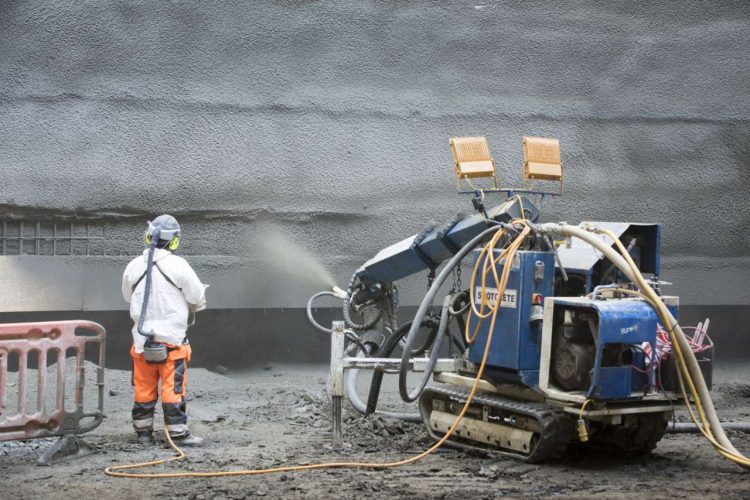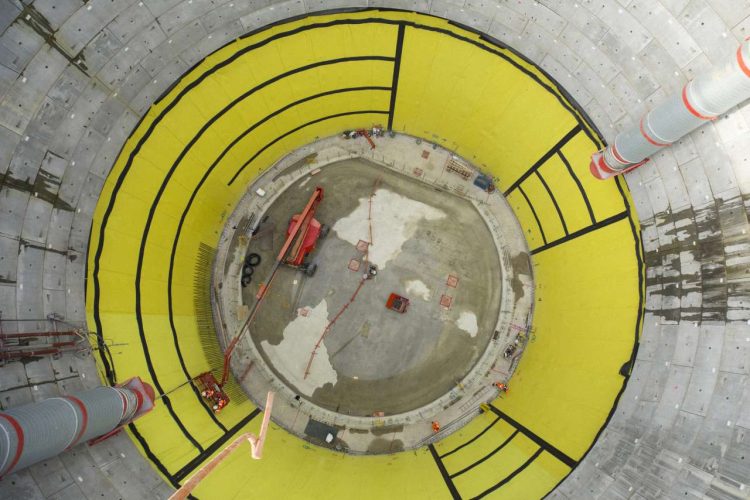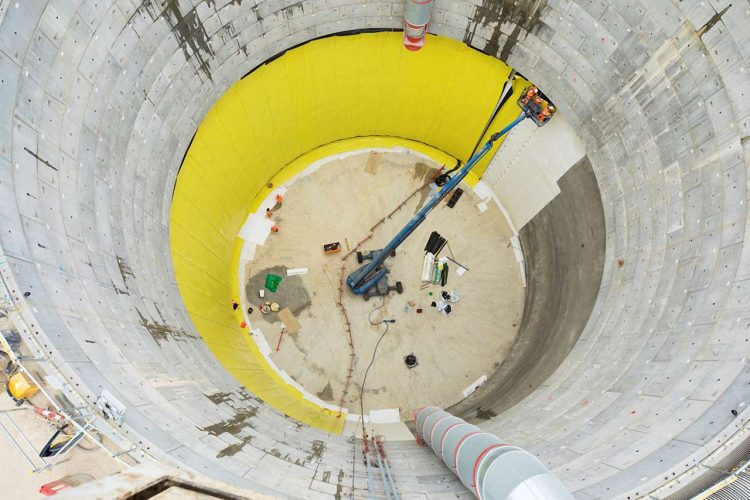Progress at HS2‘s site in Acton, west London, has taken a major step forward with the completion of the base slab for the ancillary shaft in Victoria Road by HS2’s Main Works Contractor, Skanska Costain STRABAG joint venture, SCS JV.
The first permanent works began at the site in February 2021, when a 160m3 concrete collar was poured around the ancillary shaft. Precast concrete segments were then used to build the first 11m of the 25m internal diameter shaft. The final 19m of the shaft was then using a sprayed concrete lining technique.

A team of around 30 engineers and operatives have since completed the shaft. A 3.3m-thick base slab was constructed in three different pours of concrete; the main pour of around 1,000m3 of concrete took place at the end of 2021, while the second and third pours added another 740 m3 of concrete and were completed by the end of January this year.

The site will provide critical infrastructure for the operation of HS2. As well as the 25m internal diameter shaft, which will provide ventilation and emergency access to the Northolt tunnels, SCS JV is building a crossover box on the site that will allow trains to change lines on the way in and out of Old Oak Common station.

The site at Victoria Road also has a crucial role to play in the construction of HS2. SCS JV will also use the site to assemble and launch two tunnel boring machines (TBMs) that will dig the 3.4-mile eastern section of the Northolt tunnels. These are due to arrive early next year and will begin a 12-month programme of tunnelling later in 2023.
A Logistics Hub located at the Willesden Euroterminal will also be connected to the site by a conveyor system that will remove spoil excavated from the tunnels.
The conveyor system also connects the Logistics Hub to the Old Oak Common station site. That will become operational later this year and remove around 1 million lorries from the road.
Speaking about the progress on site, HS2’s Project Client, Malcolm Codling, said: “The team at Victoria Road have made huge strides, completing the base slab of the ancillary shaft, and preparing the site for the launch of two tunnel boring machines. As we move into the next phase of work. It won’t be long until we begin to see where the railway will run through the site, taking it from our detailed construction plans to reality.”
Speaking about the scale of the programme, Skanska Costain STRABAG Joint Venture’s Managing Director, James Richardson, said: “We’re constructing eight ventilation shafts along our 13 miles of twin-bore tunnels in London and this vent shaft is the first to advance to this stage. Work is progressing well at all our other shaft sites so that they are ready for the tunnel boring machines to travel through them as our huge tunnelling programme progresses over the next three years.”





Responses